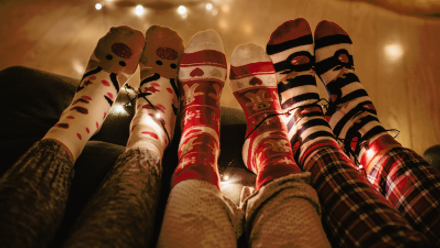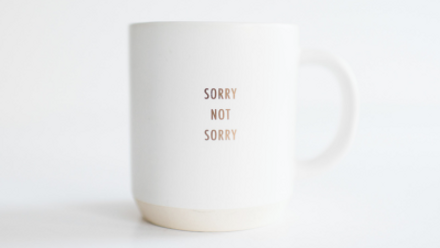Back to basics - Bedrooms
5 minute read
A bedroom should ideally be a calm, relaxing space where you can easily fall asleep at the end of the day. However, if it’s been a while since you had a good sort out, you may find clutter building up beside the bed, on surfaces or creating a "floordrobe" if your clothes never make it back into the wardrobe.
This clutter can affect your sleep and mental wellbeing, as it is visual stimuli that your brain continues to process while you fall asleep. It can also make getting ready in the morning frustrating when it is difficult to find the things you need.
APDO member Sue Spencer shares her quick guide to help you reclaim your bedroom and take the first step towards a more restful space.
Make a plan
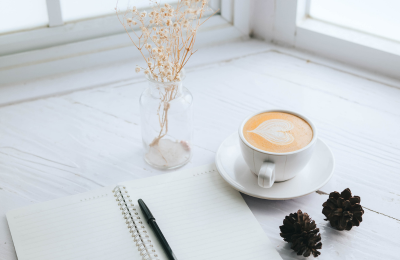
Before decluttering your bedroom, think about what you want to achieve. Whether it is to simplify your morning routine, create a workspace or simply tidy up your toiletries, having a clear objective will motivate you and help you decide what stays and goes as you reorganise your bedroom.
Remove anything that doesn’t belong in your bedroom
First, take a quick look around the room and clear away any surface clutter. Remember to also check under the bed, on your bedside table and at the bottom of your wardrobe. Remove any rubbish that's in the room and then look for any items that don't belong in there, such as kids' toys, plates, mugs and paperwork. Put these items in a box to make it easy to deliver them back to where they belong. You may want to postpone returning them to their proper places until you've finished decluttering so you don't get distracted.
Start small
To make decluttering less overwhelming, it's helpful to break the task into smaller parts. As a KonMari Consultant, I prefer to declutter by category, but you could also divide your room into different areas and tackle them one at a time. This approach allows you to tackle the entire room in a single day or work on decluttering one category at a time. As you make progress, you can check off each completed task, which helps you see your overall progress.
Typical categories to find in bedrooms are:
- Clothes (split this into underwear, tops, bottoms, dresses etc)
- Toiletries (make up, skincare, haircare)
- Accessories (belts, bags, shoes, jewellery)
- Ornaments, photo frames
- Linen (bedding, towels)
- Books, papers
Declutter and make decisions!
Remember the following guidelines when decluttering:
Piles of clutter are often the result of avoiding decisions about what to do with items. Now is the time to make those decisions you’ve been putting off!
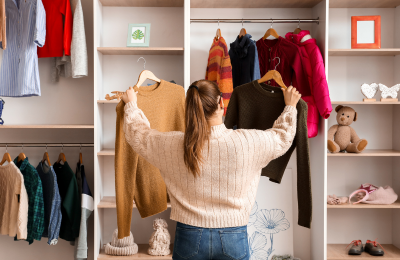
Choose a category or area to work on, gather all the items in one space and go through each item one by one. Decide whether it is something you love and use, or if it can be discarded. Consider the following questions as you do this:
- Which of these is my favourite? Do I use any of the others?
- How does it make me feel?
- Is it in good condition?
- Do I need it for practical purposes?
- What would I wear/use if I didn’t have this?
If you’ve been holding on to expensive clothes that don't fit, ornaments received as gifts, or toiletries with fragrances you don't like, compare them to the items you love. Ask yourself if you will ever use them – if the answer is no then let them go.
Don’t get stuck on your decisions – if there’s something you’re unsure about, set it aside in an ‘unsure’ pile and revisit it later to make a decision. Most people find it easier to make decisions about their unsure piles once they can see what they’ve kept and are happy that they have everything they need.
Find a home for everything you’ve kept
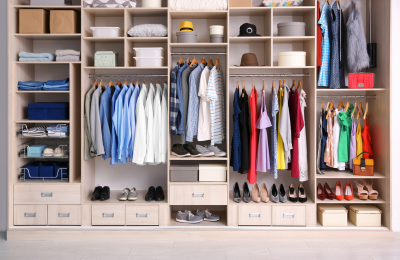
After decluttering, find specific places for the items you want to keep. This makes it easier to put things away and prevents clutter from building up again. When storing your clothes, group similar items together, such as dresses, knitwear and trousers. Remember that not everything needs to be hung up – items like jumpers, tops and jeans can take up less space if they are folded in drawers or placed in baskets on shelves.
Consider using thin velvet hangers to maximise space in your wardrobe. If needed, store out-of-season clothing on top shelves or under the bed to create more space for your everyday clothes.
To keep surfaces clear, only keep the toiletries you use and display the ornaments or photos you really love. Any extra toiletries should be stored together out of sight, you can then ‘shop from your stock’ as you need things.
Pass on the items you no longer need
Consider the best ways to part with items you no longer need – such as selling, trading in, or listing for free on apps and local Facebook sites. Charities are always grateful for good quality donations, and unused toiletries would be welcomed by local food banks or The Hygiene Bank. I always suggest using the option that’s easiest for you so you can quickly remove the items and enjoy your newly-decluttered space.
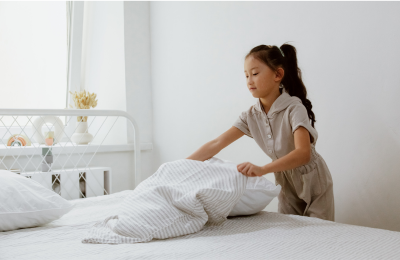
Keeping your room clutter-free
Start your day by making your bed and picking things up from the floor. This will keep your room tidy and discourage you from cluttering it. Spending just 5 minutes each morning on this will help maintain a peaceful and clear bedroom, making it a place you'll enjoy going to sleep in every night.
If you would like professional support creating a bedroom that meets your needs, review our member directory and find your local organiser today.

